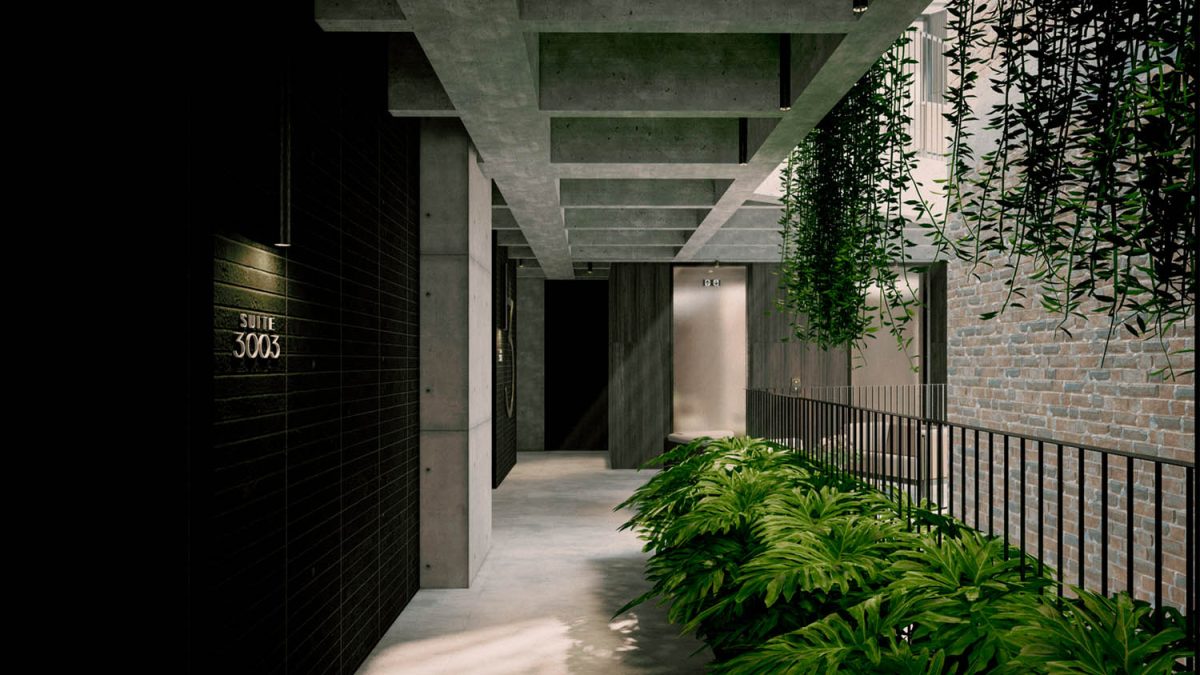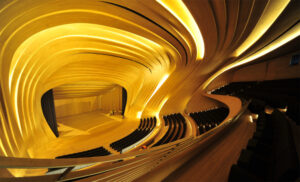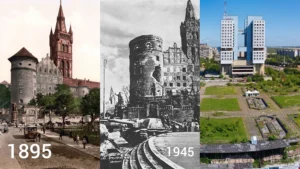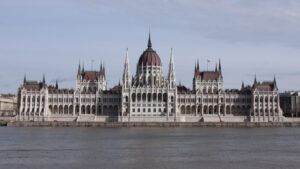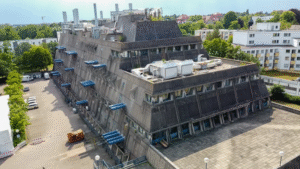The 75% Carbon Cut: Why Protecting the Environment is Climate Action
Brutalist architecture, from London’s Barbican to Le Corbusier’s towers, has been around for decades and has always been controversial. People typically thought that the big concrete buildings of the mid-20th century were chilly, inefficient, and ugly, whether they liked them or not. In the past, the easiest way to fix a deteriorating Brutalist landmark was to use a wrecking ball.
People now perceive that wrecking ball as a climatic disaster in 2025.
The argument about Brutalism has changed from one about looks to one about carbon accounting that affects our own existence. When you tear down a big concrete building, you let out a huge quantity of embodied carbon, which is the carbon that was released when the original materials were made, moved, and put together.
Architects and legislators now know that the best approach to reach Net Zero goals is not to build new, high-tech buildings, but to save and improve the ones that are already there. Designers can cut the total embodied carbon emissions of a new building by 50% to 75% right away by keeping the core structure and foundation of a Brutalist building. In the fight against climate change, this makes the Brutalist tower an unexpected advantage. It starts a revolution in sustainable retrofitting.

This resource was generated with AI Image Generator.
The Climate Case for Keeping Concrete
The Demolition’s Embodied Carbon Disaster
The building industry needs to look beyond operational carbon (the energy needed to heat and cool a building) and focus on embodied carbon if it wants to really do something about climate change. Brutalism is based on concrete, which is one of the biggest sources of CO2 emissions in the world.
This means that every cubic yard of concrete in a Brutalist building that is already built is a huge investment of carbon that has already been used. Taking it down effectively puts that carbon investment back into the air and makes a lot of new, high-carbon stuff. So, keeping the structure is the most important thing in Circular Architecture. To meet climate targets, we must protect these long-lasting “concrete giants” because most of the buildings we will use in 2050 are already up.
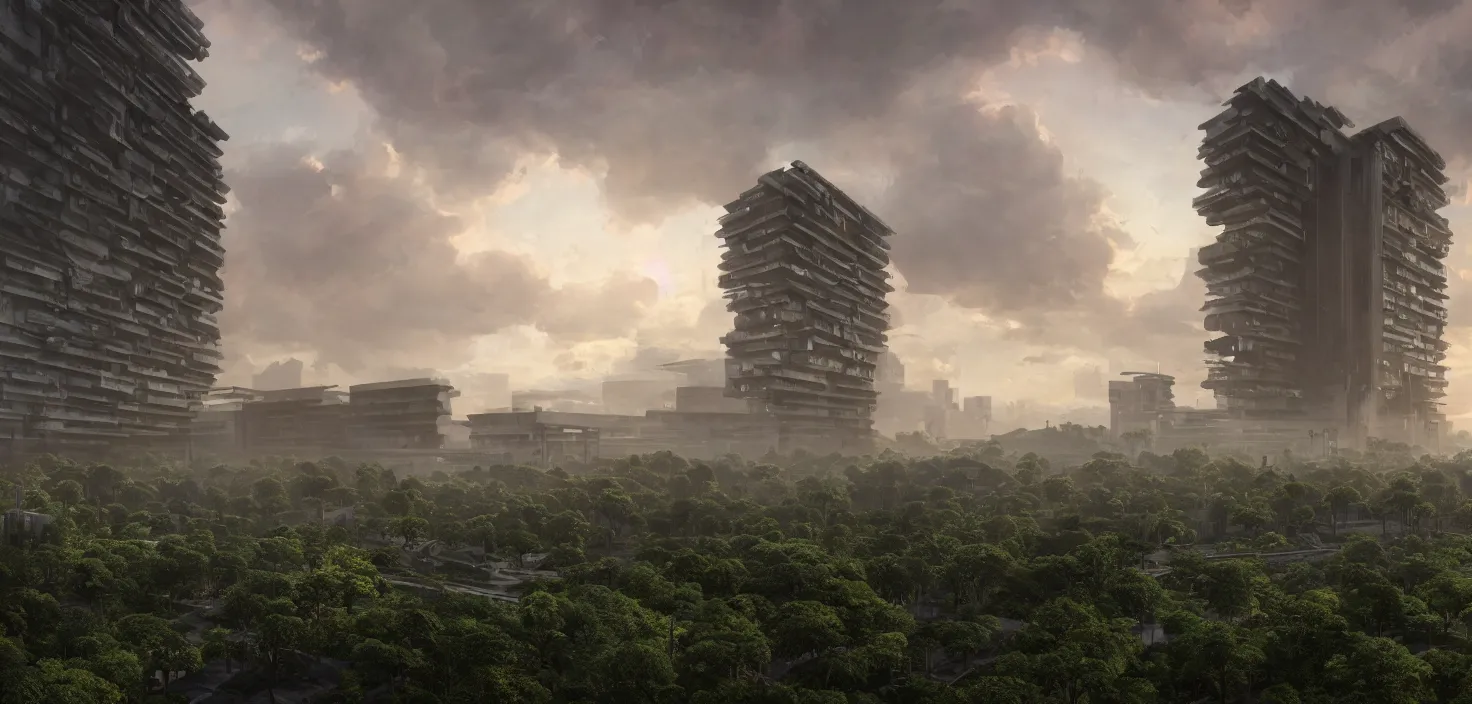
brutalist architecture, surrounded by lush green vegetation, trending on Artstation
The Dividend of Durability
Brutalist buildings are very strong by design. The exposed concrete finish, sometimes known as béton brut, was meant to be honest and last. This natural strength is a huge plus for long-term sustainability. It may be hard to insulate the material, yet its structure can last for more than a hundred years. Architects don’t have to worry about how long their buildings will last; they have to worry about how well they work. This insight has led to the creation of advanced technology solutions that let the buildings keep their original look while also performing well in the 21st century.
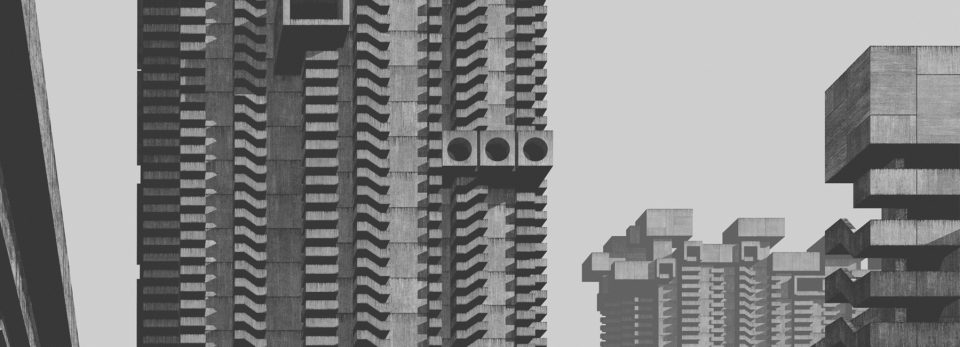
Brutalist Skyline /Source: weburbanist.com
The Retrofit Revolution: Ways to Keep Your Skin Healthy
The most important thing about the Brutalist Retrofit Revolution is fixing the building’s biggest problem: it doesn’t use energy well. The single-shell concrete walls don’t insulate well and cause a lot of thermal bridging, which makes heating and cooling expenses high. The answer is to use new technologies and materials to make a high-performance envelope.
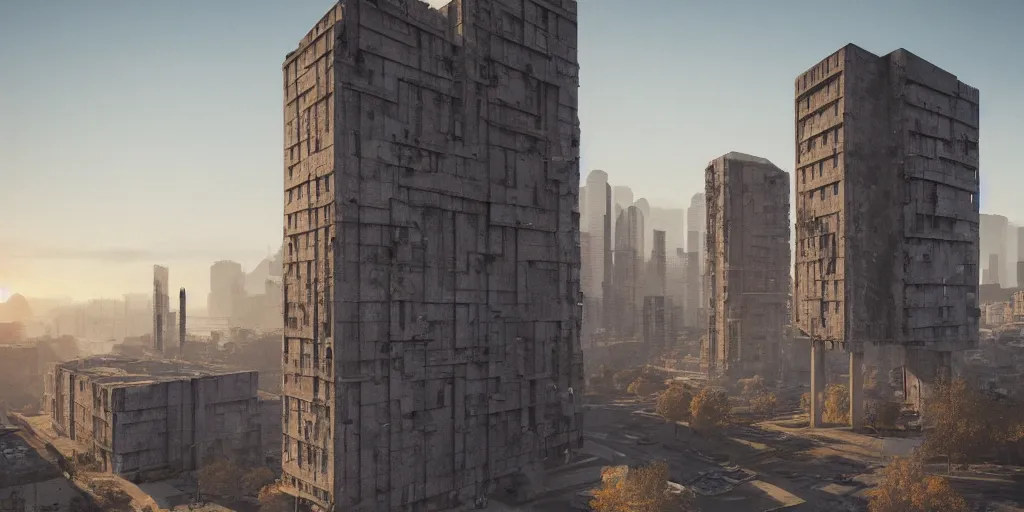
An expansive brutalist city made of concrete:: golden hour:: Beautiful lighting:: highly detailed digital art, trending on Artstation
From Béton Brut to Smart Skins
Modern Retrofitting is a Sensitive, High-Tech Process that Entails
- High-Performance Insulation: Putting on modern facade systems over advanced external insulation layers. You can make these systems look like the original concrete or switch them out for lighter, more sustainable cladding.
- Advanced Glazing: Getting rid of heat loss and gain by replacing old, single-pane windows with high-efficiency triple-glazing. It’s important that these new windows look just like the old ones so that the historical look stays the same.
- Mechanical Upgrades: Replacing old, inefficient boiler systems that run on fossil fuels with new, low-carbon options like ground source heat pumps (GSHPs) and sophisticated ventilation systems. Many retrofits include solar panels on the roof, which turn the tower, which used to waste energy, into a self-sufficient energy producer.
The Growth of Eco-Brutalism
A cultural movement called Eco-Brutalism is shaping the look of the retrofit period in more ways than just performance. This new style puts the hard, straight lines of concrete next to the soft, living things in nature on purpose.
Eco-Brutalist projects take a lot of inspiration from biophilic architecture and add a lot of plants to the building:
- Vertical Gardens and Green Roofs: On top of the huge concrete balconies and rooflines, there are large planters, living walls, and lots of green roofs. This not only makes the intimidating seem less scary, but it also helps the environment by lowering the urban heat island effect, cleaning the air, and controlling stormwater runoff.
- Contextual Brutalism: In hotter places, architects employ the Brutalist style—deep overhangs, recessed windows, and hefty mass—as a natural way to block the sun and control temperature. This shows that concrete can be a strong and climate-friendly material when used wisely.
This aesthetic redemption, exemplified by projects such as Stefano Boeri’s Vertical Forest towers (conceptually a successor of Brutalist massing), demonstrates that the harsh may truly transform into the beautiful and ecological.
A Utopia Reboot: Taking Back the Social Mission
The Brutalist movement started with socialist and utopian ideas about how to build high-quality, high-density public housing after World War II. It often failed not because of the design itself, but because of a lack of public funding, bad upkeep, and the social stigma that came with it.
The retrofit revolution of today is about getting back to that initial social goal.
When housing estates are torn down, people often have to move and communities are destroyed. By choosing adaptive reuse, governments and developers may invest in communities that already exist, modernizing the homes for 21st-century living and bringing back the pride and idealism that went into building them in the first place.
This revival puts a lot of emphasis on:
- Interior Warmth: Using warm wood accents, soft fabrics, and well-thought-out lighting to offset the bare concrete and make the interiors feel welcoming and healthy.
- Community Integration: Making ground floors and public access areas that were often cut off from each other into connected civic spaces, community gardens, and open-air hubs.
The success of the Brutalist Retrofit Revolution will not only be evaluated by the amount of carbon saved, but also by the communities that are brought back to life and the pride we feel in our concrete past.
Brutalism and the Carbon Question: Frequently Asked Questions
Q: What is the main concern with concrete when it comes to carbon?
About 8% of the world’s CO2 emissions come from making cement, which is an important part of concrete. This means that the embodied carbon in existing concrete buildings is very high, which makes tearing them down an expensive thing to do for the environment.
Q: What does “eco-brutalism” mean?
Eco-Brutalism is a style and design approach from the 21st century that combines the strong, rough concrete shapes of Brutalist architecture with a lot of biophilic design elements, such vertical gardens and green roofs, to make things both sustainable and nice to look at.
Q: How much carbon does it save to adapt a Brutalist building?
According to an analysis of the industry, reusing the existing structure and foundation of a large building cuts the total embodied carbon emissions by 50% to 75% compared to taking it down and building a new one of the same size.
Q: Do Brutalist buildings have historical importance?
Yes. As a worldwide prominent architectural style linked to post-war recovery and social idealism, many are today regarded as cultural heritage. Retrofitting lets us keep this history alive while yet reaching modern climate goals.
The Future Is Solid, But Greener
In the last few years, the story about Brutalism has changed completely. It is no longer a sign of failed modernism; instead, it is a huge resource in the fight for global sustainability. These concrete giants are the biggest chance we have to quickly cut down on embodied carbon emissions since they are so big and last so long.
The world of architecture has taken on the challenge: we can make the concrete titans more eco-friendly. It takes technical skill, a willingness to spend money, and a group of people who understand that the structures, even with their imperfections, were built to last. The Brutalist Retrofit Revolution is not a fad; it is the right way to design buildings in the future.
Why demolishing a Brutalist tower is a climate catastrophe. Explore the 2025 Eco-Brutalism movement, high-tech retrofitting strategies, and how architects are achieving up to 75% embodied carbon savings by transforming concrete giants into sustainable, net-zero housing.
Reference:
Reducing embodied carbon in concrete materials: A state-of-the-art review – ScienceDirect
SolvingEmbodiedCarbonChallenges_ConcreteSpecs.pdf
For more blogs like this CLICK HERE!!

